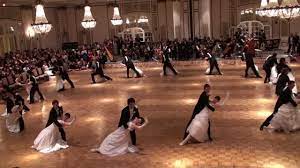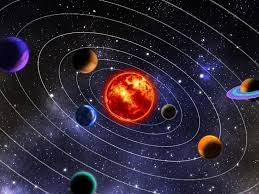Topic: Solar system and planets orbit revolution and rotation
Area: Science
Abstract: Looking at the Viennese Waltz, the elegant and perfect dancing movements draw elliptic shapes on the ground. While the partners rotate on each other like planets with their satellites, the dancing couples also perform a revolutionary orbit around the sun, that would be different for each planet and satellite they represent.
Learning objectives:
•Learning about the solar system
•The planets elliptic orbit and their satellite
•Coordination skills
•Team building
•Klepero’s laws
Advisable age of students: (13-19)
Attention to diversity and inclusion aspects to have in account: Movement obstacles
Previous knowledge: None
Total duration: 30-45 min
Materials: Free room space to perform the activity; tape to mark the elliptic orbits on the ground
Phase 1 Visualisation
Duration: 10/15 min
Development : Modern form of Waltz was born in suburbs of Vienna and in the mountain regions of Austria, and was created not for folk dancers, but for court. Before that time, all court dances were rigid, stately, solemn, procession-based, very tightly controlled, with complicated moves and timings. Waltz changed that with theintroduction of free-form dance, which immediately sparked revolt and scandals from traditional lovers of old ballroom dance. Somehow, what could appear as free-form movements that planets execute around sun, they are calculable elliptic orbits instead. Thus, the couple that perform the dance represents the planet and its main satellite (earth and moon) drawing elliptic orbits following the marks on the ground. Prior the dance, the trainer has to explain the basic waltz dynamics to the students, following the rotational and revolutionary movements of the planets and satellites.
Phase 2 Artistic action and experimentation
Duration: 30/40 min
Development:
•Draw the orbits with tape on the ground (just the few points to show the curve shape). Theoretically, depending on the number of participants, it should be drawn each solar system elliptic orbit (8+1).
•Assign role to each participant (sun, planets, satellites).
•Play waltz to start the dancing (just background).
•Each couple should dance at the speed is needed to replicate the harmony of the solar system. According to Keplero’s law, it means the closest planets (ex. Venus) go faster because the orbit perimeter is shorter and the centrifugal force push harder, whereas the farthest planets move slower for the same logic (longer perimeter, less centrifugal force).
•The round is divided in steps according to the season, to understand why natural phenomena are related to earth position on the orbit.
•When moon eclipses occur, the light goes off.
Phase 3: Reflexion and debate
Duration: 10/15 min
Development: Focus group and brainstorming could be used to interact and receive feedback
Engagement – How it was for you to collaborate with your peers?Did you face any challenge during the development of the exercise?How did you overcome it? Do you think using dance to teach these concepts has been more effective than classic lessons’
Efficacy – Do you think the activity was well-explained? How did you find the support of the trainer? Did you learn something about the topic? What would you suggest to improve the trainer approach? And what about the activity? Do you think the material was correctly set for the development of the exercise? Is there any other suggestion or reflection that would you like to share?
References and links: The Viennese Waltz – http://www.dancefacts.net/dance-history/waltz-history/


